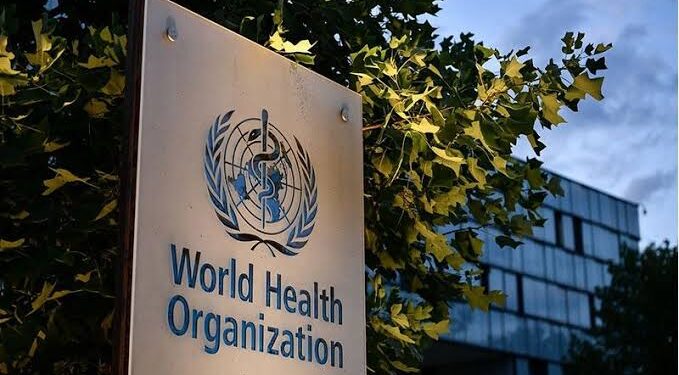Alcohol kills about three million people each year, according to the World Health Organisation, and while the death rate has decreased marginally in recent years, it is still “unacceptably high”.
According to the United Nations Health Agency’s most recent study on alcohol and health, alcohol causes roughly one in every twenty fatalities worldwide each year, primarily through drink driving, alcohol-induced violence and abuse, and a variety of diseases and disorders.
The analysis shows that alcohol consumption caused 2.6 million fatalities in 2019 — the most recent available numbers — accounting for 4.7% of all deaths globally that year.

According to the report, men accounted for nearly three-quarters of the deaths.”Substance use severely harms individual health, increasing the risk of chronic diseases, mental health conditions, and tragically resulting in millions of preventable deaths every year,” said WHO director general Tedros Adhanom Ghebreyesus.
He stated that there had been “some reduction in alcohol consumption and related harm worldwide since 2010″.(But) the health and social burden due to alcohol use remains unacceptably high,” he added, emphasising that young people are disproportionately affected.
The WHO reported that adults aged 20 to 39 had the largest number of alcohol-related mortality in 2019, accounting for 13%.
Drinking has been related to a variety of health problems, including cirrhosis of the liver and some malignancies.
According to the research, non-communicable diseases were responsible for almost 1.6 million of all fatalities in 2019.
474,000 died from cardiovascular disorders, 401,000 from cancer, and a staggering 724,000 from traumas such as road accidents and self-harm.
According to the survey, alcohol consumption increases people’s susceptibility to infectious diseases such as tuberculosis, HIV and pneumonia.
In 2019, an estimated 209 million people were dependent on alcohol, accounting for 3.7 percent of the global population.
According to the data, global per capita alcohol consumption fell marginally to 5.5 litres in 2019, down from 5.7 litres nine years earlier.
Half of the world’s population over the age of 15 abstains entirely.Europe has the greatest per capita drinking levels (9.2 litres), followed by the Americas (7.5 litres).
The survey found that largely Muslim countries in Northern Africa, the Middle East, and Asia had the lowest consumption rates.
According to the survey, people who drank alcohol in 2019 consumed an average of 27 grammes of pure alcohol per day. That’s roughly the equivalent of two glasses of wine, two small bottles of beer or two shots of spirits.
This level and frequency of drinking is associated with increased risks of numerous health conditions and associated mortality and disability,the World Health Organisation (WHO) advised.
In 2019, 38% of current drinkers admitted to engaging in excessive episodic drinking, which is defined as ingesting at least 60 grammes of pure alcohol on one or more times over the previous month.
Globally, 23.5% of 15- to 19-year-olds are current drinkers. This increased to more than 45 percent for adults of this age living in Europe and nearly 44 percent in the Americas.
According to the WHO, improving access to high-quality treatment for substance use disorders is very important.
In 2019, the proportion of people seeking such therapy services ranged from less than one percent to 35 percent in countries that provided this data.
“Stigma, discrimination, and misconceptions about treatment efficacy all contribute to these critical gaps in treatment provision,” Vladimir Poznyak, chief of WHO’s unit for alcohol, drugs, and addictive behaviours, told reporters.
Bottom Line
While there has been some reduction in alcohol consumption and related harm since 2010, the overall burden remains high.
This calls for sustained and comprehensive public health strategies, including education, policy changes, and improved access to treatment, to mitigate the adverse effects of alcohol consumption globally.

















